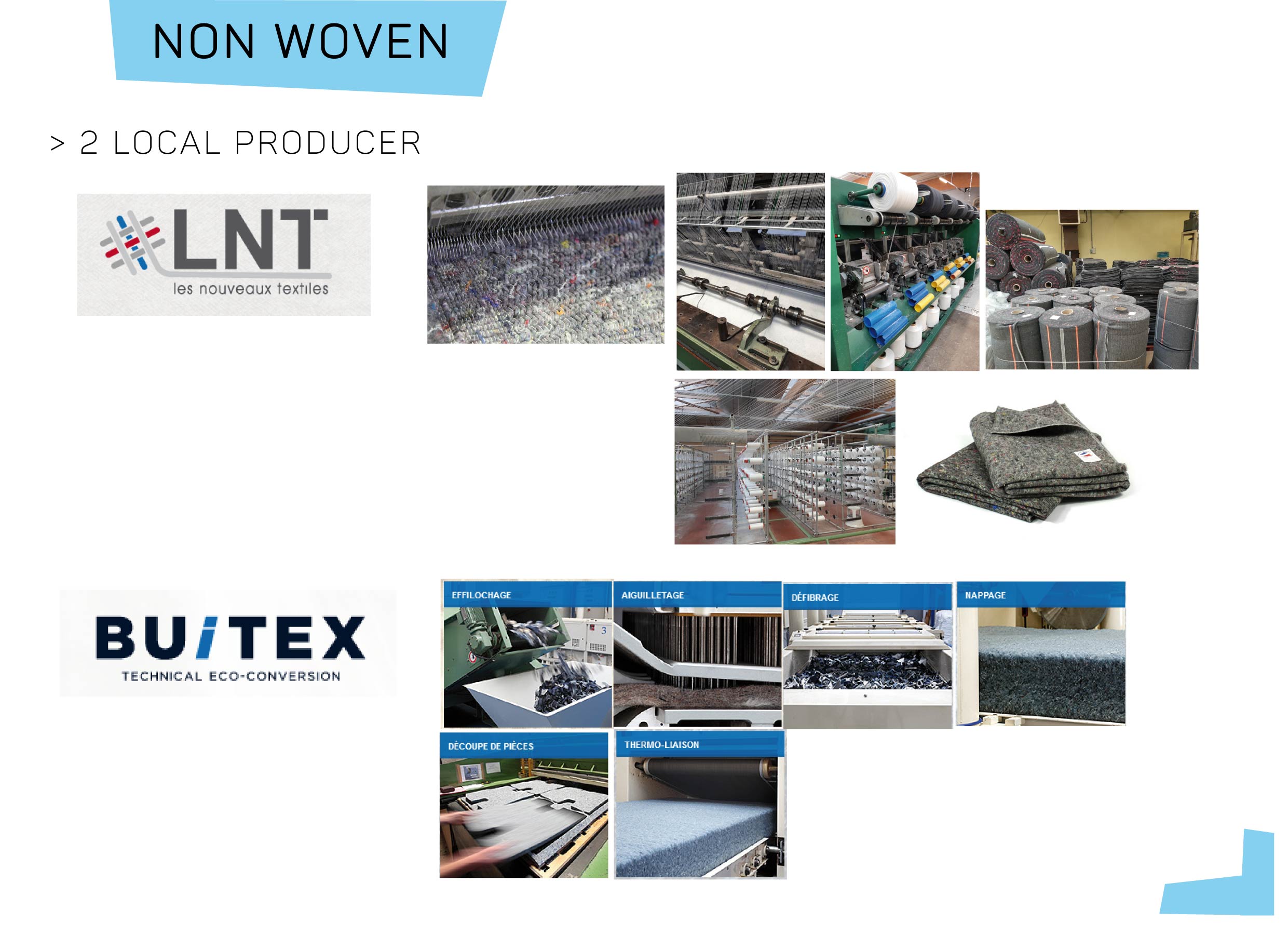MY PRESENTATION¶

After all these weeks, the time came to be concentrated on my personal project. One of the tracks envisaged at the very beginning of the training was #NEWFABRIC = Through an even experimental approach, find a way to produce your own raw material and create different types of products, from clothes to decorative objects. Being able to create transversally: being able, for example, to make a jacket as a lampshade or a decorative object...
The idea has taken hold, mixed and enriched by few of the themes discovered during all these weeks.
During week 9 (around the notion of the mold), I had a trigger concerning the re-use of textile waste (which I used to fill a mold): it seemed quite logical to me, as a designer from the textile industry, to explore how to reuse them....
The discovery of a relevant example FAB-BRICK helped me to define the recycling direction to take.
INSPIRATION¶
While she was a student in architecture, Clarisse MERLET, the founder notices how much construction is a polluting and energyintensive industry, so she decides to find a way to built differently, especially with the use of raw material wastes such as plastic bottles, cardboard or plastic cups….She had the idea of reusing discarded clothes by making it an innovative raw material. Based on the characteristics of the recovered textiles, she designs an ecological building material both thermal and acoustic insulator.
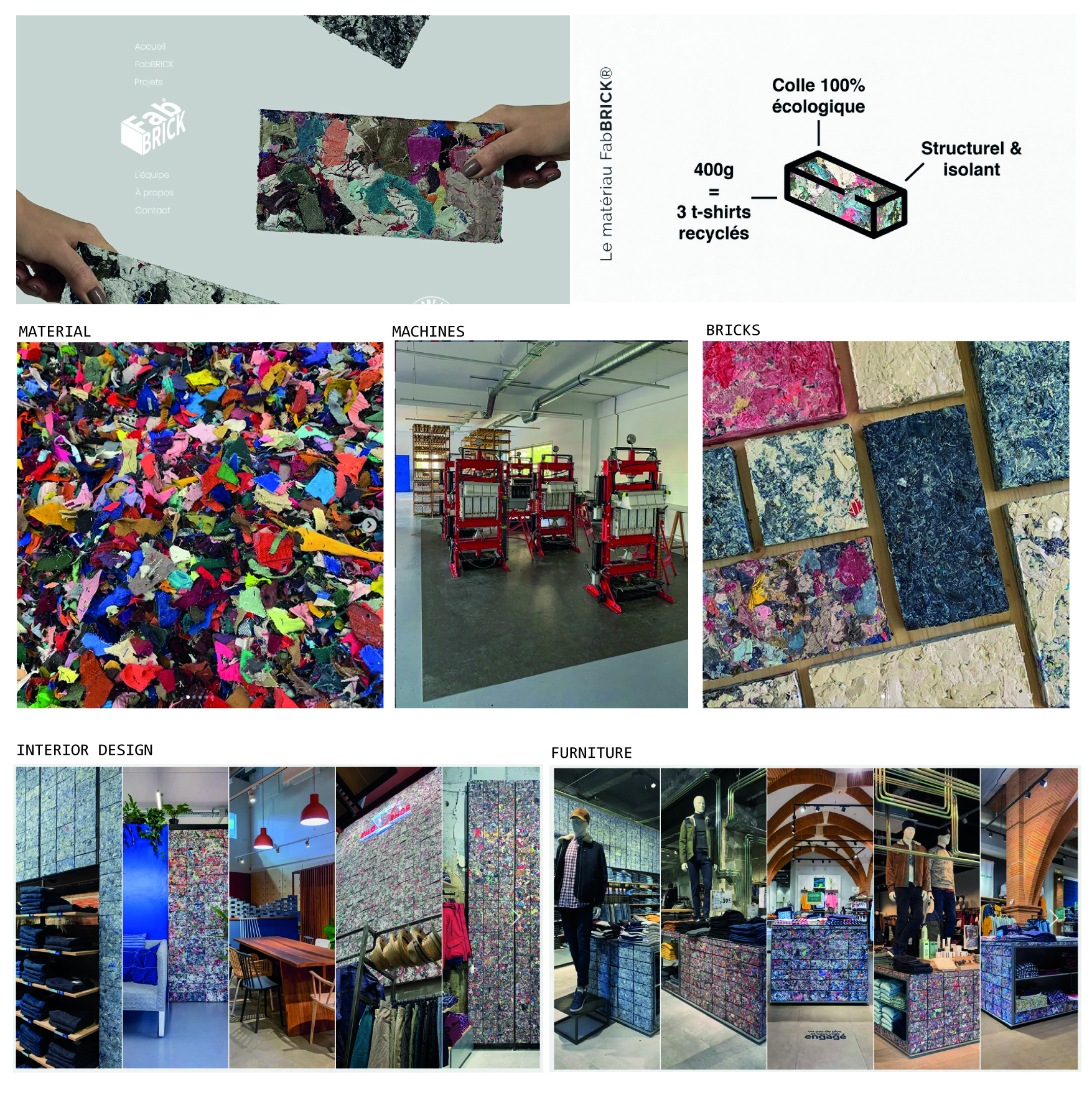
So, in order to launch the project, I plan this retro-planning
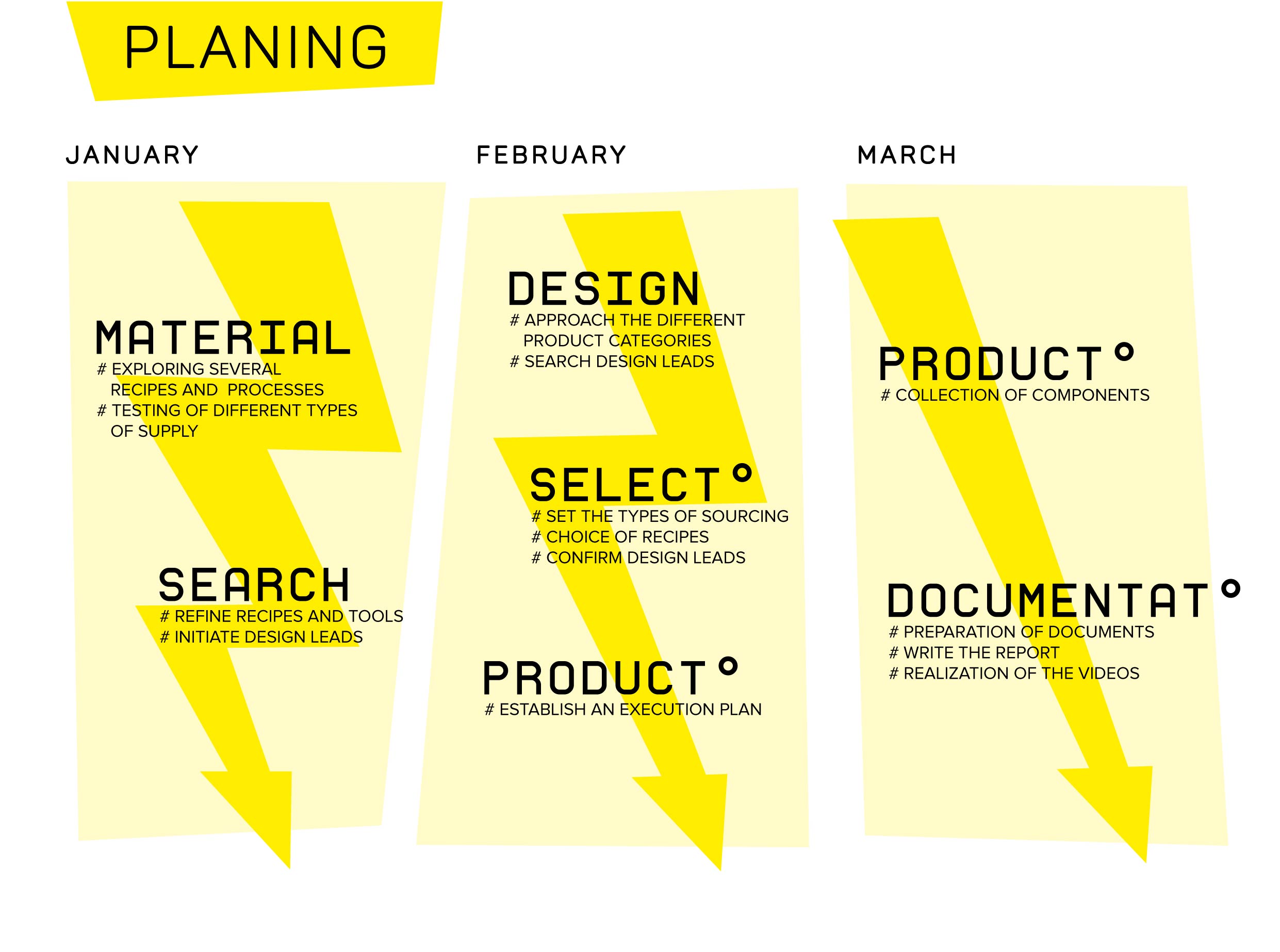


- My goal was to start the exploration of the aesthetic potential of a new textile composite material obtained from textile waste through several technical processes.
- My project was about the recycling of textile residues.
So I have organized my exploration in 3 mains ideas:
- 1/ A NEW MATERIAL: The first idea is to consider the large quantity of textile waste (scraps from production or used clothes) as a new source of material supply and being able to become a real new raw material.
- 2/ A CREATIVE APPROACH: the second idea is to bring a creative approach inside recycling development: concretely, the philosophy is to transform a material of low value and to give it an aesthetic value.
- 3/ A CIRCULAR PROCESS: the third idea is to enhance it in a circular process with a product 100% recycled by reusing textile residues but also 100% recyclable by mixing it with a 100% bio-resin

- Obviously, I started with the current situation which is dramatic: our over-consumption of clothes is increasing the amount of textile waste each year, with the impressive exponential development of fast fashion.
Just for example, two significant figures:


- Actually, my intention is to build an alternative path, alongside to what is already being done.

In other words, you can see that the recycled part represents 23.4% and in fact, it’s segmented into 2 parts:
- either it remains in a "classic" process by spinning
- or it generates new materials for the different sectors as housing / automotive / bedding or landscape with different non-woven techniques:
- My project is to explore this in-between area (between woven and non-woven) with the idea of reusing and diverting these nonwoven techniques.
- My objective is to generate different decorative products or furniture, but also to come back to clothing.

- During the first seven weeks, I have launched a first step by diversifying and mixing different types of MATERIALS, RECIPES and PROCESSES:
MATERIALS TESTED:¶
It was a hand-made process by shredding different types of material ( coton sheet, PE tee-shirt and old denim....) and mixing them with a bioresin.
RECIPES TESTED:¶
I decided to start the first tests from the recipes of BIO RESIN/BIO SILICONE, based on GELATINE as polymer, added with GLYCERIN as plasticizer ( Cf. Seen with Miss Cecilia_Week_6). Then I tried testing STARCH (with paper glue) and WOOD GLUE.
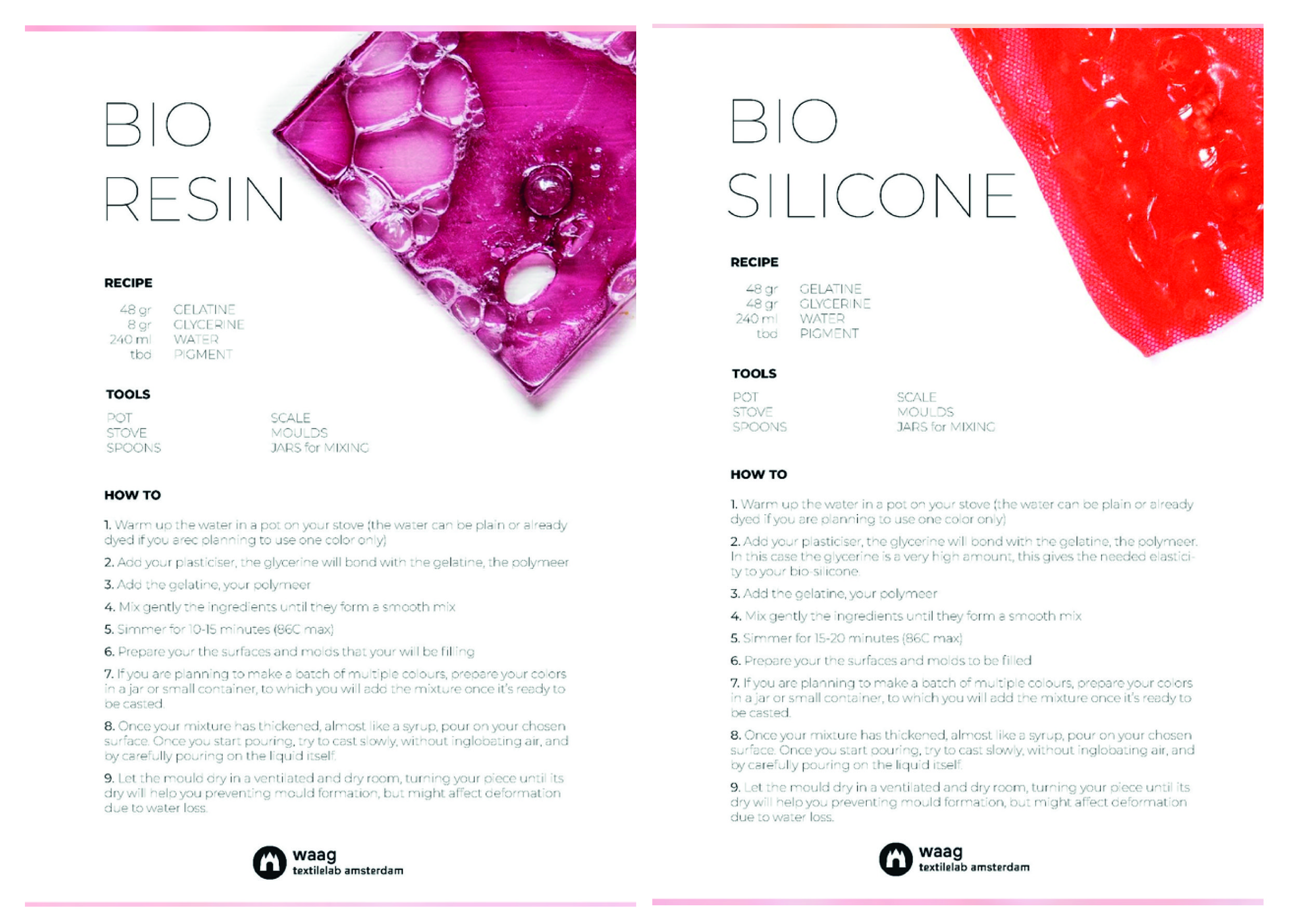
SHREDDED FABRIC:¶
The idea is to go from very compact/hard to softer/lighter and test each couple recipes/processes. I started with shredded fabrics. Here are some examples of tests carried out:

TEST_101
- Fabric=DENIM material
- Process= compacted inside a jar (in the idea of making a candleholder stand)
- Recipe = WATER 480 Ml + 96 gr GELATIN + 16 gr GLYCERIN
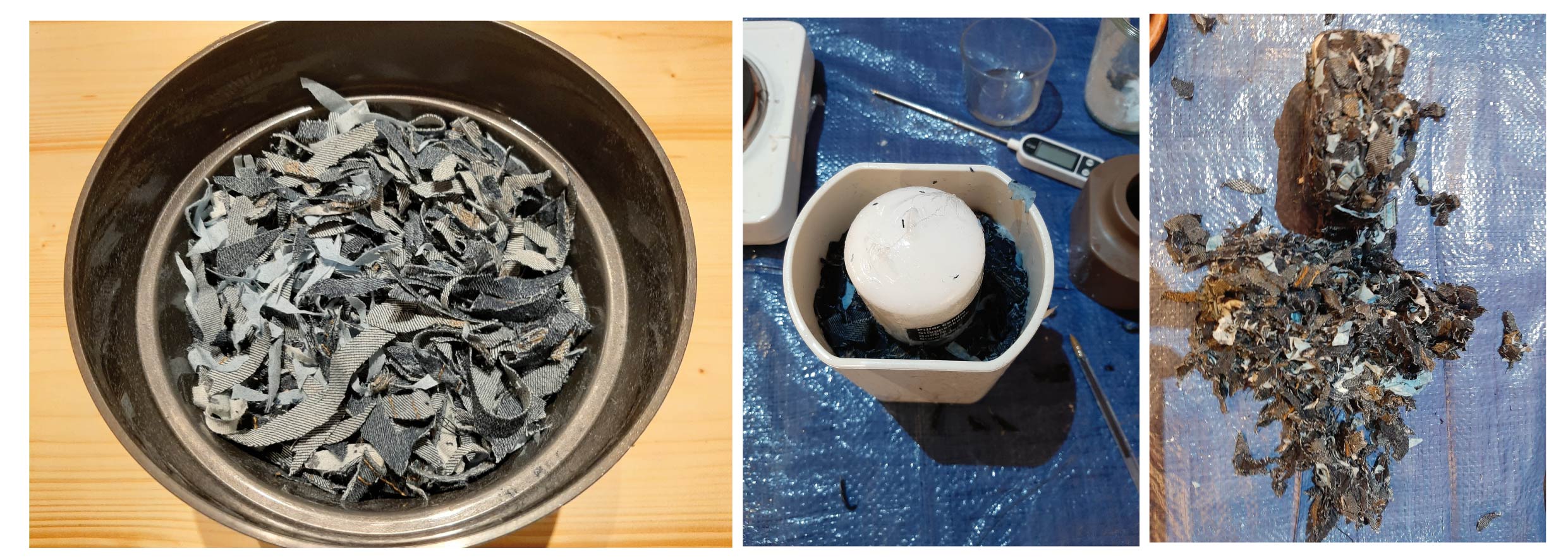
TEST_103
- Fabric=DENIM material
- Process= compacted hamburger steack
- Recipe = 30 gr STARCH (paper glue) / 500 ml WATER with 40 gr Denim Fabric

TEST_104
- Fabric=DENIM material
- Process= compacted long steack
- Recipe = 12 gr ALGINATE / 20 gr GLYCERIN / 200 ml WATER
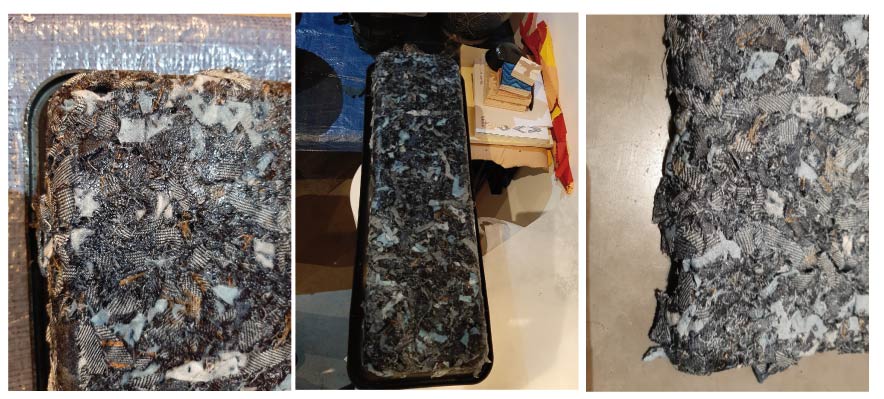
TEST_202
- Fabric=COTTON SHEET material
- Process= flattened long sheet
- Recipe = WATER 480 Ml + 96 gr GELATIN + 16 gr GLYCERIN

TEST_207
- Fabric= JERSEY coton material (noir violet)
- Process= flattened long sheet - Recipe = 170 gr GELATIN/ 30 gr GLYCERIN/ 600 ml WATER with 196 gr jersey PE (= un seau de petits bouts de TS)
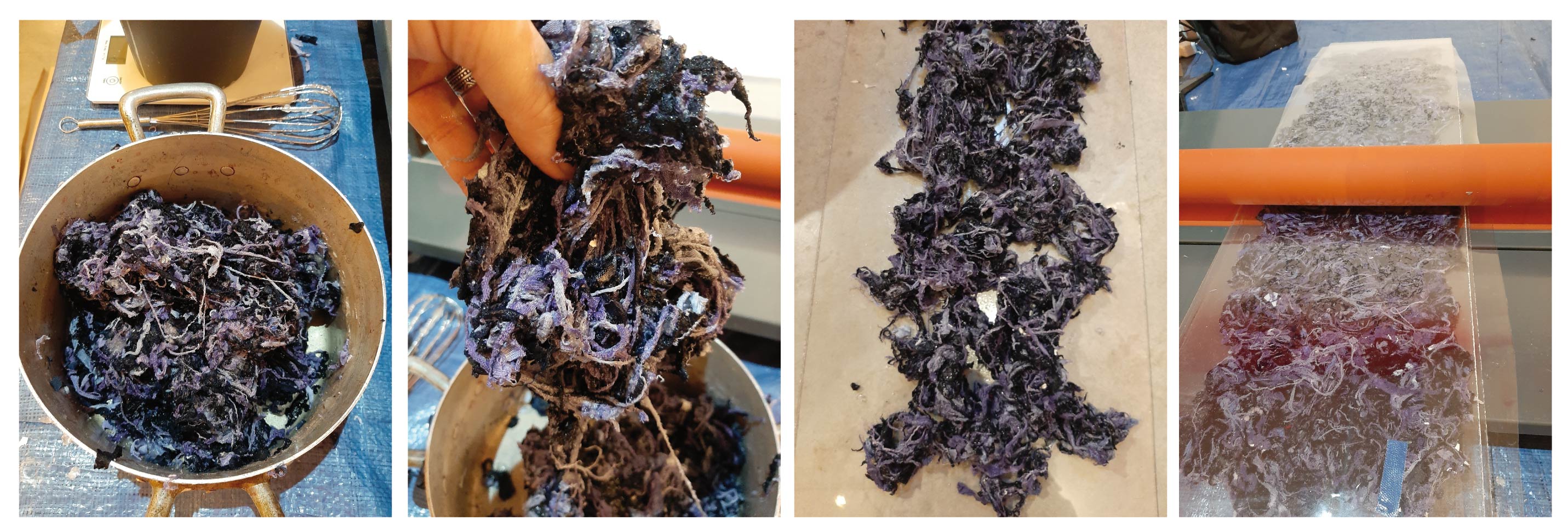
TEST_208
- Fabric= JERSEY coton material (blanc/orange)
- Process= flattened long sheet + just in shape - Recipe = 170 gr GELATIN/ 30 gr GLYCERIN/ 600 ml WATER with 196 gr jersey PE

FRAYED FABRIC¶
Afterwards, I moved to the frayed material which is easier with a good rendering quality.

- I was able to be in contact with 2 French brands: 1083 and LE GAULOIS, 2 denim brands located around Lyon and also involved in an eco-responsible approach. They produce their own material and clothes in France.
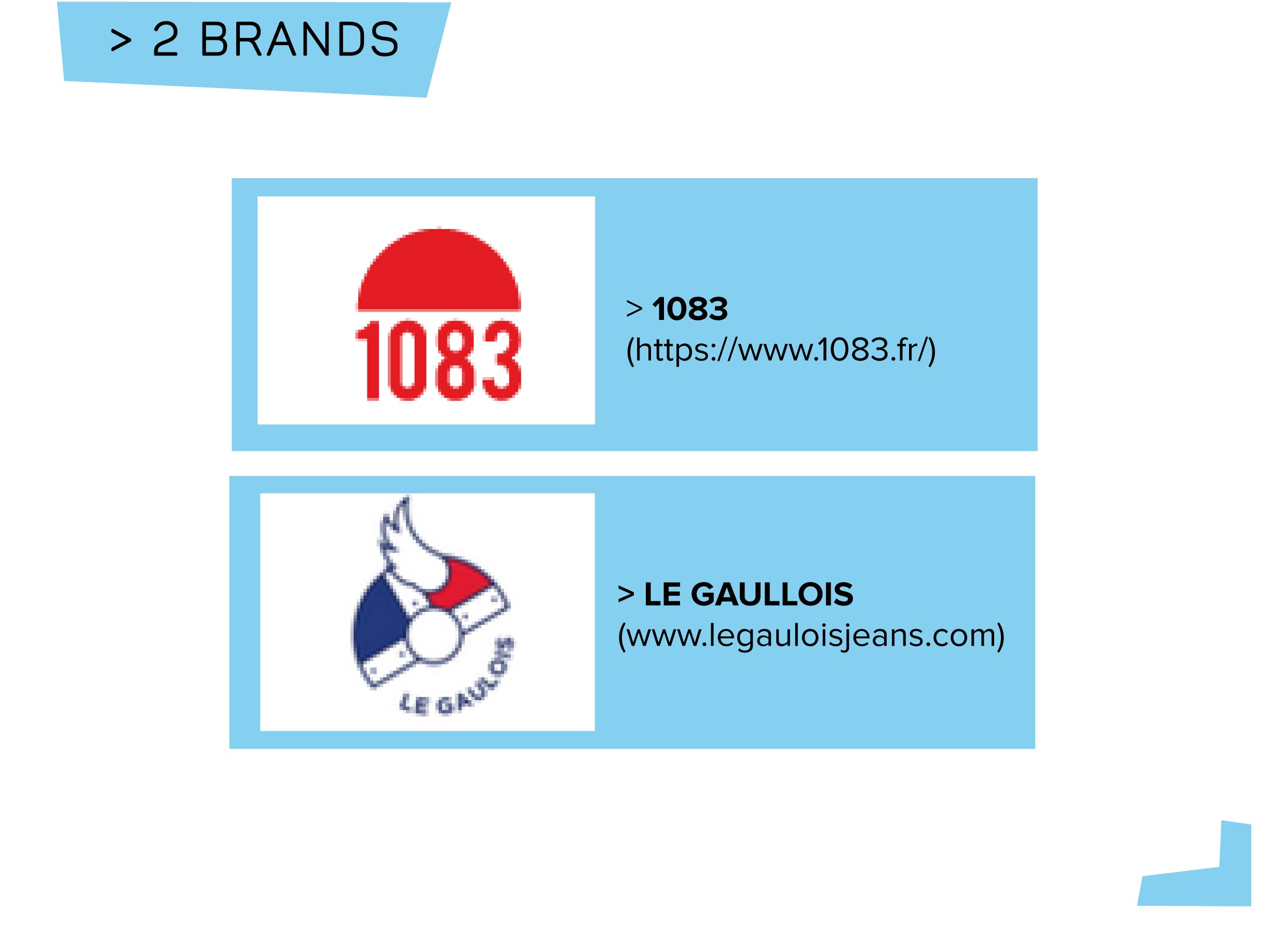
We finally have obtained it from the 1083 and the first tests show us that this allows a fine rendering of surfaces and thicknesses. This will allow different textile interventions.

- At least, the idea of the project is to be enable to mix different type of textile waste: so it’s why, I have tested one panel with a mix of cotton sheet shredded with frayed denim
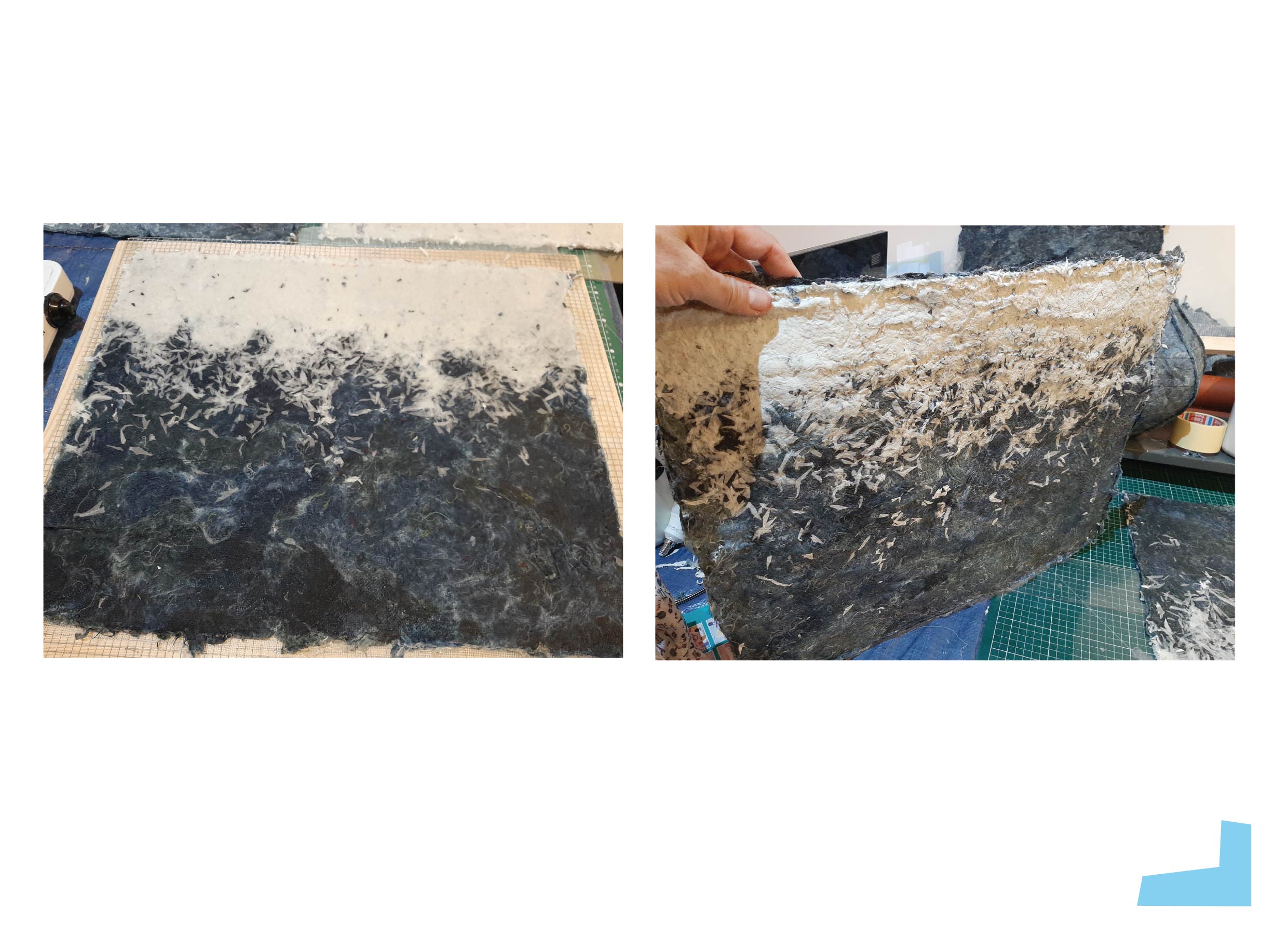

FINAL RECIPE¶
After several tests, I fixed a process with one recipe in which I made flat and compact panels. Inside the recipe, I also added glycerin to keep them flexible enough.


- Afterwards, it was a question of generating shapes with several facets in order to best render the volumes...
- And as I explained in the video, the idea of rotating seams, as if they were twisted, quickly imposed itself as the illustration of my awareness and how it has twisted my creative process.


To make a new vase, the chronology is as follows:
- 1/ Make a layer of frayed material inside a wooden frame
- 2/ Besides, pour the bioresin on the whole
- 3/ Compress it uniformly.
- 4/ Then leave to dry for 2 to 3 days
- 5/ Cut out 9 pieces, 8 facets + 1 base
- 6/ which you will assemble on the triple drive machine.
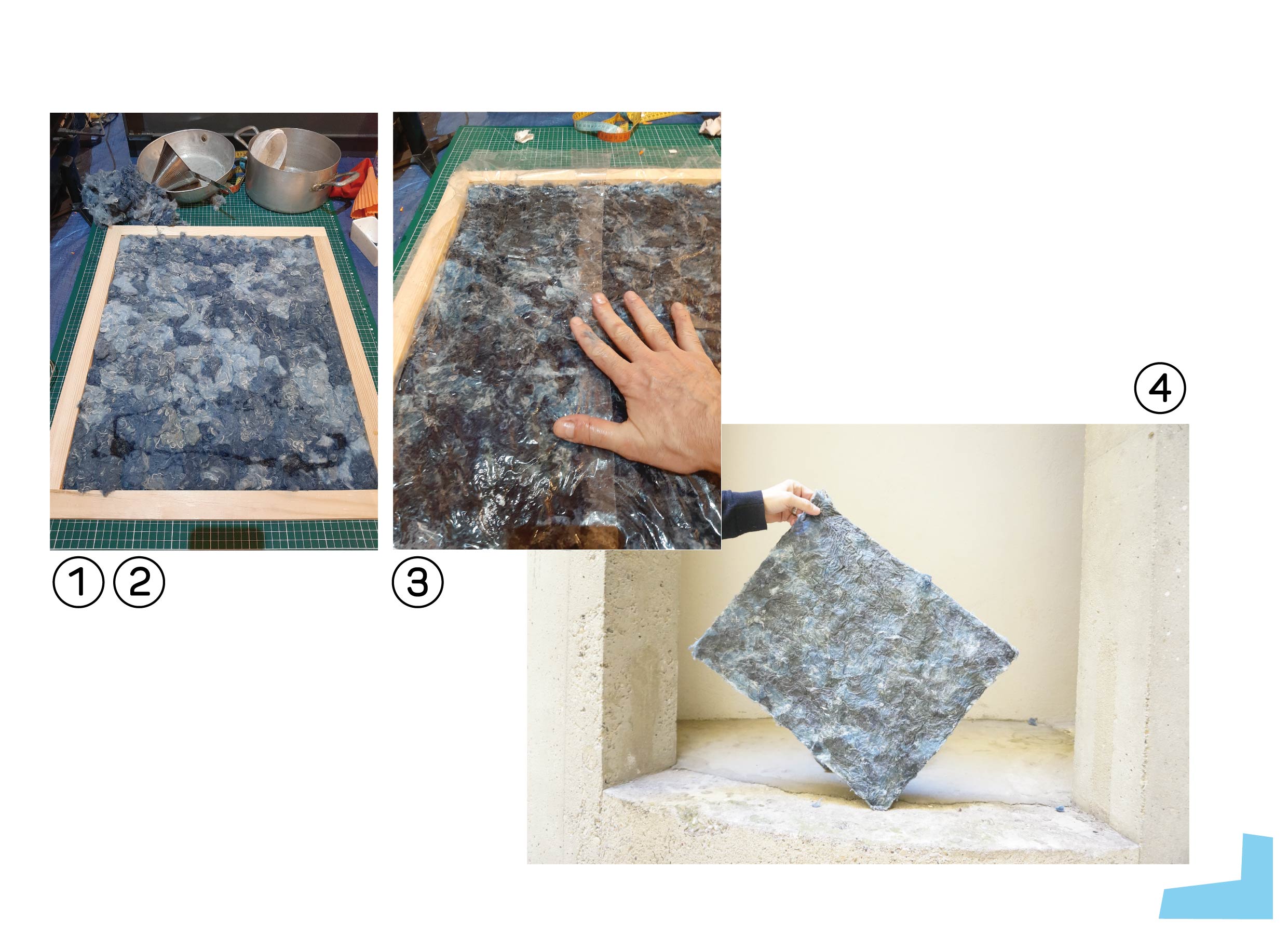
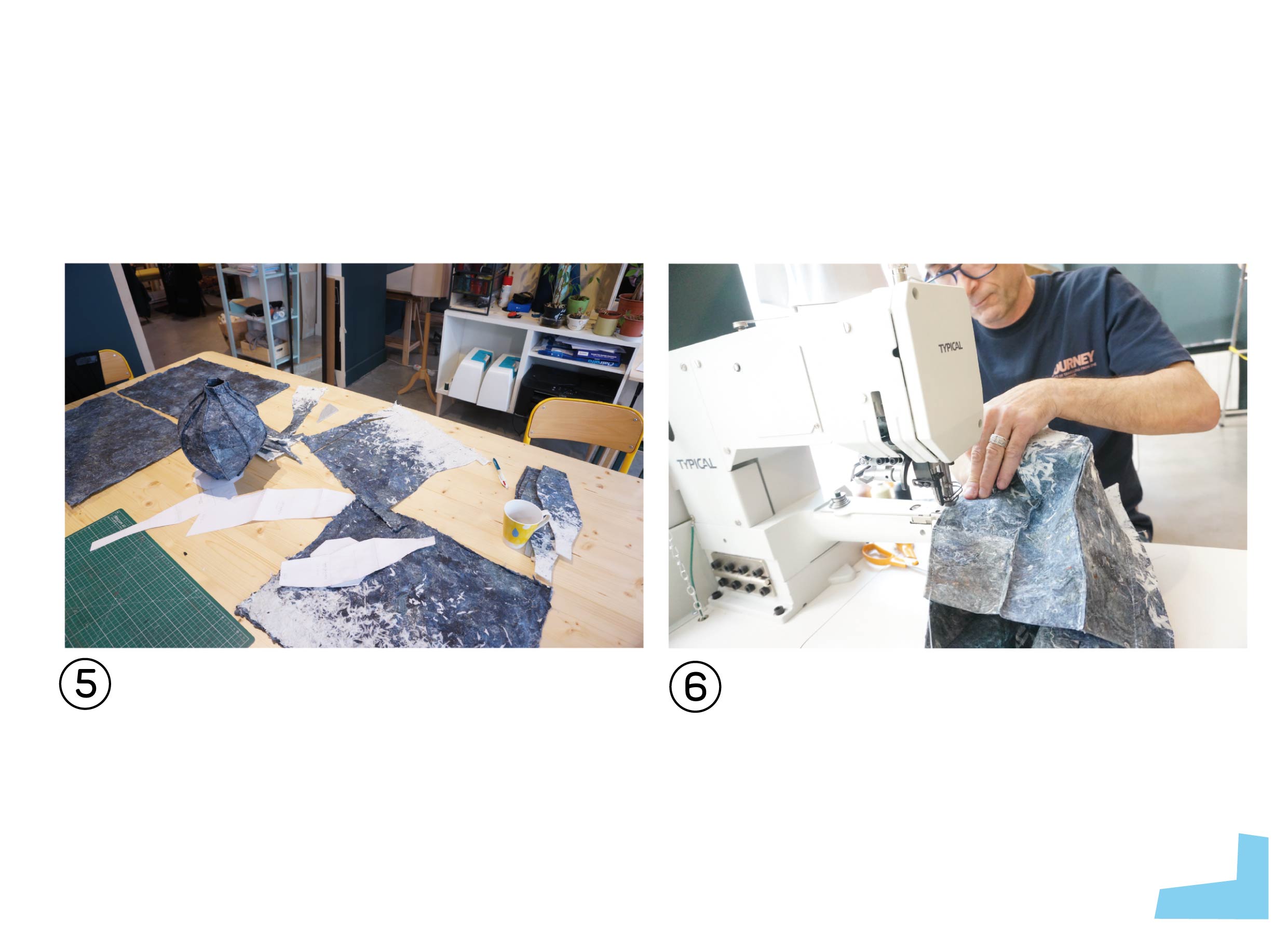

As I demonstrated at the beginning, this project carries the notion of circularity: each product can be dissolved once it goes back in a little hot water...allowing me to reconstitute a new panel....
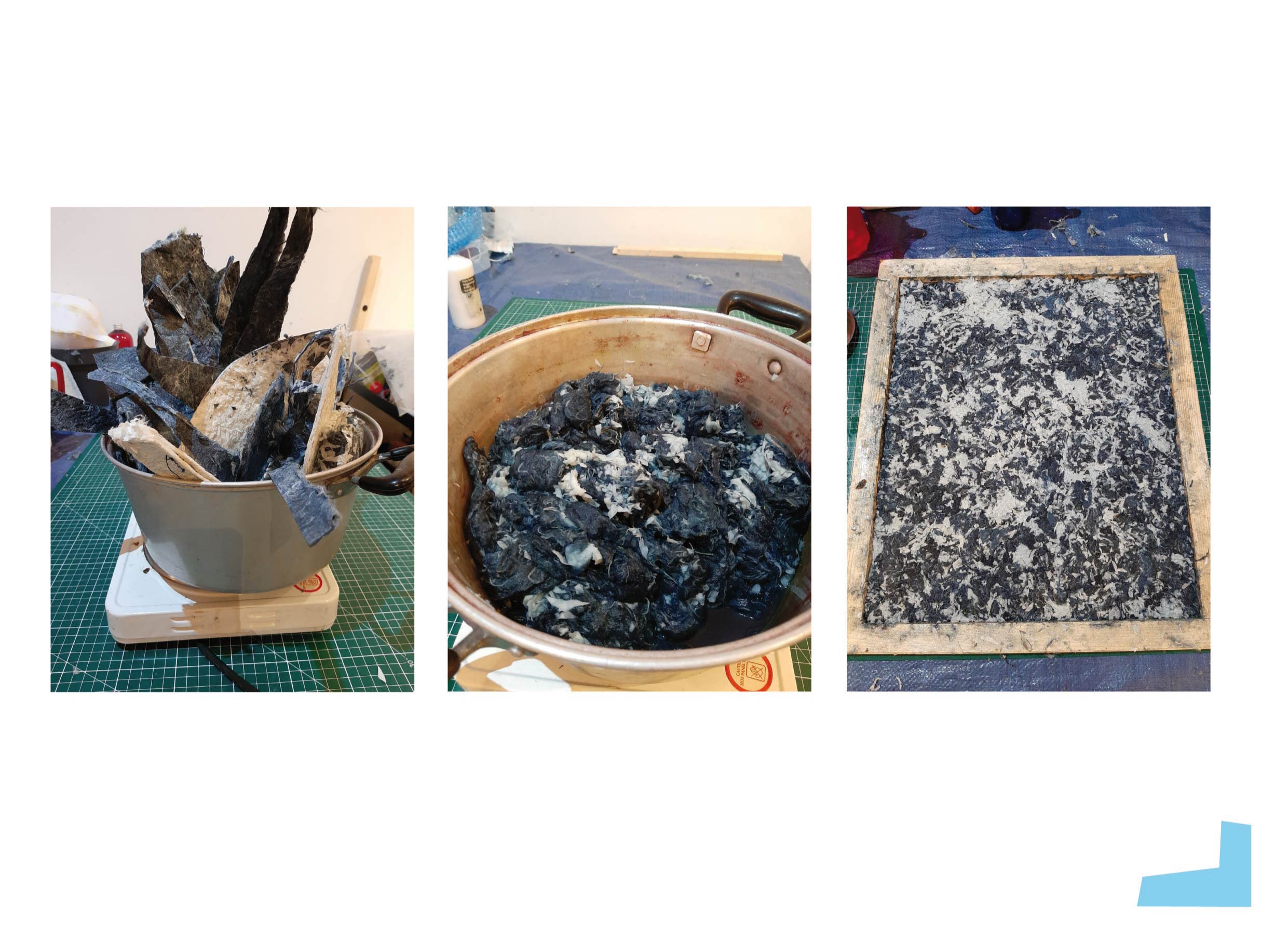
This illustration enables me to show the different possible stages, with the constitution of the panels, the making of the product and then the destruction and reformation of a new panel.
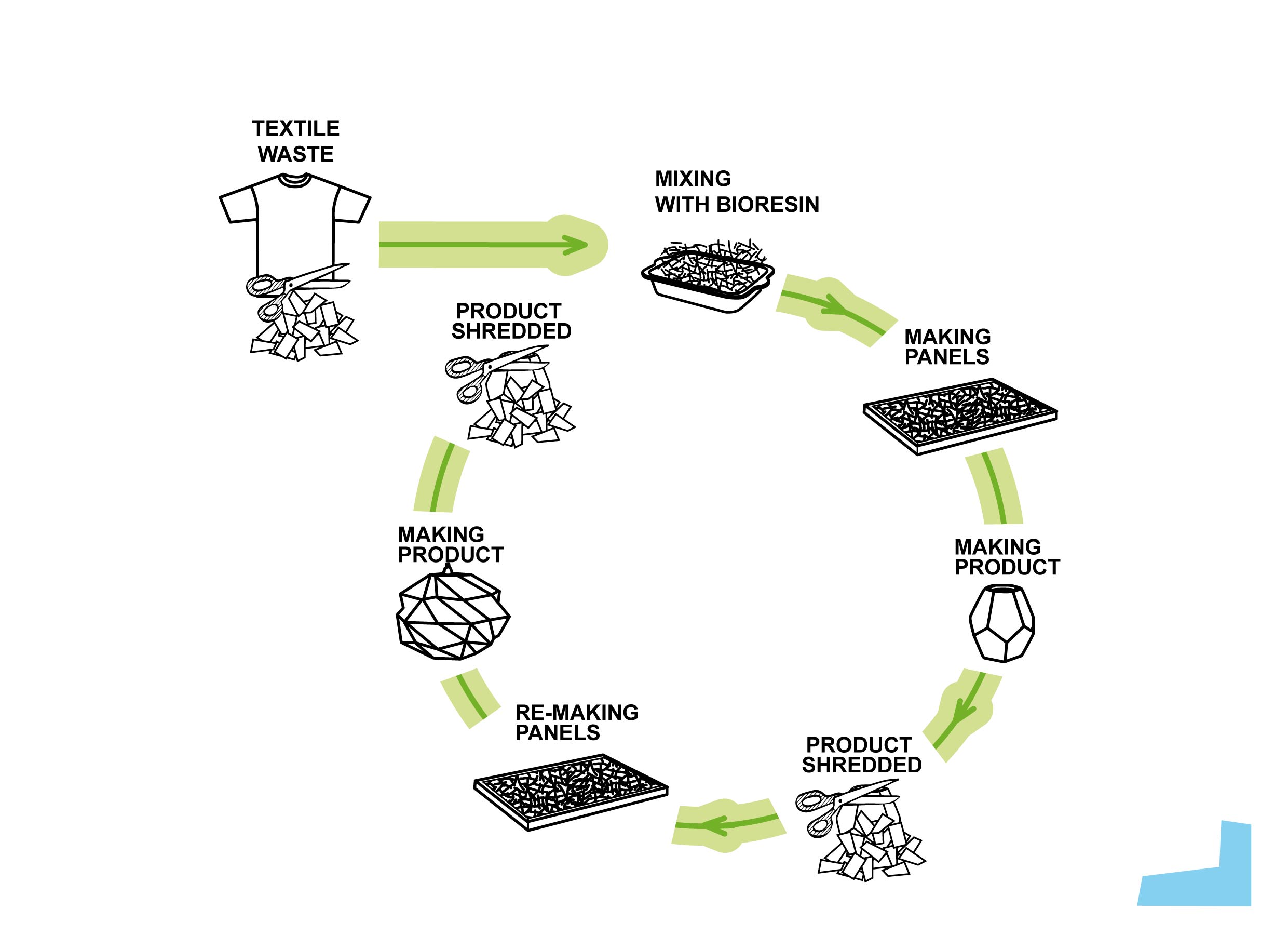

- I began this project with this first handmade way that I have just inform you about yet my field of action can be extended to other processes.
- At this point in the project, I discovered 2 very inspiring projects initiated by 2 young students, with two different directions but which explore a direction full of potential, because it’s no using bioresin and can be industrialized.
INSPIRATION¶
- Denim.istry is an amazing project of a young french student from ENSAD Paris who has worked with frayed denim material. She explored the possibilities of making a non-woven by heat....Her project is impressive for the versatility of its proposals

- Tim VAN DER LOO's work and his fantastic project NEW BLUE, developed a technique of quilting a sheet of frayed denim. He also approaches the notion of non-woven by a mechanical intervention, with the topstitching.

NON-WOVEN:¶
In a second step, we could move forward with a material that is already made and that we could impregnate with bio-resin in order to shape it.
The non-woven fabric (with mechanical intervention) is made from 100% recycled textile fibres: actually, it's a combination of fibres oriented directly in the width direction and bound by a quilting action.
I have already tried to explore this by first fixing the frayed material with - 1/ topstitching with the sewing machine - 2/ then with the embroidery machine.
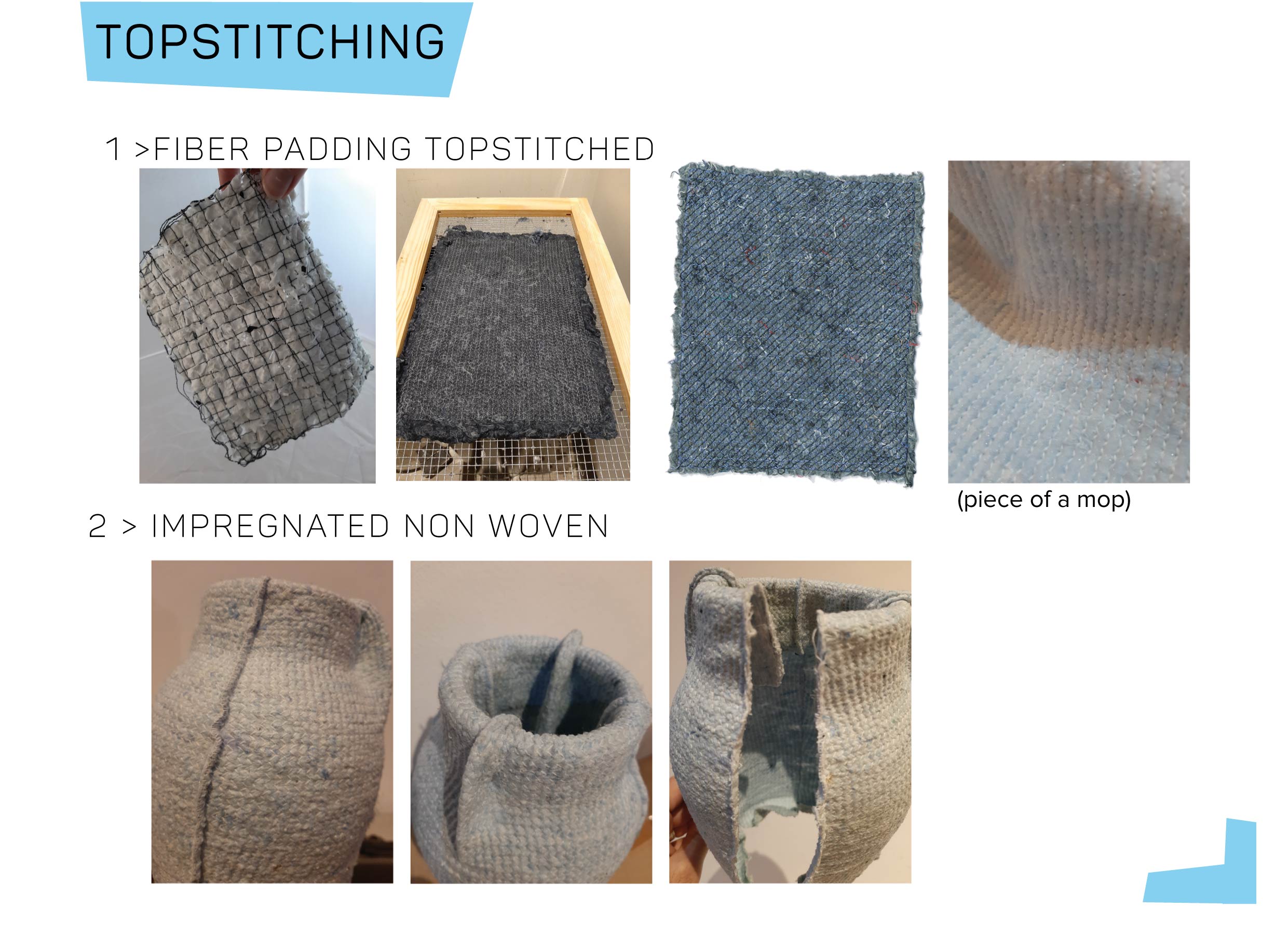
- I have also found on the market mops made with this non-woven technique and there is a real potential, a real know-how, and machines on which I could rely.
- I find out not far from Lyon, in the same area, several companies historically mastering this technique very well, for several generations.
- I contacted both of them and I was able to visit the first one.
